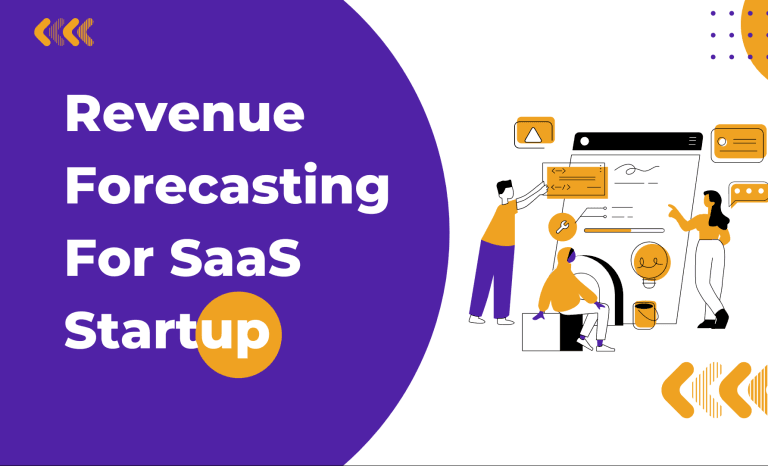In the competitive landscape of the SaaS industry, understanding the long-term value of your customers is paramount to sustainable growth. Customer Lifetime Value (CLTV) provides a crucial SaaS metric that reveals the profitability of each customer over their relationship with your business. By calculating CLTV, you can make data-driven decisions regarding customer acquisition, retention, and upselling strategies.
This comprehensive guide will walk you through the step-by-step process of calculating CLTV for your SaaS business, along with practical examples and best practices. Armed with this knowledge, you can unlock the full potential of your customer base and drive your business forward.
Why CLTV Matters for SaaS
CLTV is a cornerstone metric because it measures the total revenue a business can expect from a customer over their entire relationship. Since SaaS companies invest heavily in acquiring customers and depend on recurring payments, understanding CLTV helps businesses evaluate the effectiveness of their customer acquisition strategies, retention efforts, and overall business health. Moreover, investors and Venture Capitalists (VCs) closely scrutinize CLTV when assessing a SaaS startup’s growth potential and valuation. A higher CLTV not only indicates a profitable and scalable business model but also plays a critical role in attracting investment and achieving long-term success in the competitive SaaS landscape.Here’s why CLTV is essential for SaaS startups:
Revenue Prediction and Business Planning
CLTV provides a clear estimate of the total revenue a business can expect from a customer over their entire relationship with the company. This helps in financial forecasting i.e. future revenue and financial planning & analysis business strategies accordingly.
Customer Acquisition Cost (CAC) Alignment
By understanding CLTV, SaaS companies can better align their customer acquisition costs. Ideally, the CLTV should significantly exceed CAC, ensuring that the cost of acquiring a customer is justified by the long-term revenue they generate.
Product Development and Improvement
High CLTV indicates customer satisfaction and loyalty, which can inform product development. SaaS companies can focus on features and services that retain customers and increase their value over time.
Customer Retention Strategies
Knowing the CLTV helps SaaS businesses develop targeted retention strategies. By understanding the value of retaining existing customers, companies can invest in customer success, support, and loyalty programs that increase the overall CLTV.
Pricing Strategy
CLTV can inform SaaS pricing strategies. SaaS businesses can use insights from CLTV to adjust pricing models, create tiered pricing, or offer upsells and cross-sells that maximize customer value.
Competitive Advantage
A higher CLTV compared to competitors gives a SaaS company a competitive edge. It means the company is better at retaining customers and extracting more value from them, which can be a significant advantage in a crowded market.
Investor Attraction
VCs and investors use CLTV to gauge the future revenue a SaaS company can generate from its customer base. A high CLTV suggests that the business has a strong product-market fit, effective customer retention strategies, and the potential for scalable growth. This makes the company more attractive to investors looking for promising opportunities.
Startup Valuation:
CLTV plays a crucial role in determining the valuation of a SaaS startup. Investors often compare CLTV to Customer Acquisition Cost (CAC) to assess whether the company is efficiently turning its marketing and sales investments into profitable, long-term customer relationships. A healthy CLTV-to-CAC ratio indicates that the company can achieve profitability and sustain growth, which can significantly influence its valuation and the amount of funding it can secure.
Read More: How To Do Startup Valuation Using Different Methods
How to Calculate Customer Lifetime Value (CLTV) in Excel
Step 1: Calculate the Average Customer Lifetime:
Begin by determining the average duration a customer stays with your business, which is a fundamental aspect of CLTV calculation.
To do this, analyze historical data that reflects how long customers typically remain active users of your product or service. A common approach is to calculate the average customer lifetime by dividing 1 by the churn rate (the percentage of customers who stop using your product over a given period).
For example, if your monthly churn rate is 5%, the average customer lifetime would be 1/0.05 = 20 months.
Utilize Cohort Analysis:
To gain deeper insights, perform a cohort analysis, which involves grouping your customers based on their acquisition date and tracking their behavior over time. By observing retention rates within these cohorts, you can better understand how long different groups of customers stay with your business. This approach allows you to identify trends and patterns, such as whether newer customers have a longer or shorter average lifetime compared to earlier cohorts, or how retention rates change as your product evolves.
Incorporate Customer Segmentation:
Recognize that not all customers are the same different segments may have varying average lifetimes. For a more precise calculation, segment your customer base according to specific criteria such as company size, industry, geographic location, or usage patterns. For instance, enterprise customers might have a longer average lifetime due to their larger investment in your product, while smaller businesses might churn more quickly. By calculating the average customer lifetime for each segment, you can tailor your CLTV calculations to reflect these differences, leading to more accurate and actionable insights.
Step 2: Determine Your Average Revenue Per User (ARPU)
Calculate ARPU:
The Average Revenue Per User (ARPU) is a crucial metric that represents the average revenue generated from each customer over a specific period, typically calculated monthly or annually. To determine ARPU, divide your total revenue for a given period by the number of active users during that same period.
For example, if your SaaS business generated $100,000 in revenue from 1,000 customers in a month, your monthly ARPU would be $100 ($100,000 ÷ 1,000 customers).
This figure provides insights into the revenue efficiency of your customer base and helps you gauge the financial health of your business.
Factor in Upselling and Cross-Selling:
When calculating ARPU, it’s important to include the additional revenue generated through upselling (encouraging customers to purchase a higher-tier product or service) and cross-selling (offering complementary products or services). These strategies can significantly boost the revenue generated per customer. Track the impact of upselling and cross-selling efforts over time to understand how these initiatives contribute to your overall ARPU. By factoring in these additional revenue streams, you’ll have a more accurate and comprehensive view of your average revenue per user.
Account for Different Pricing Tiers:
If your SaaS business offers multiple pricing tiers (e.g., basic, premium, enterprise), it’s essential to calculate ARPU for each tier separately. Customers on higher-priced plans typically generate more revenue, but they might also have different usage patterns and churn rates compared to those on lower-priced plans. To obtain a weighted ARPU that accurately reflects your entire customer base, calculate the ARPU for each tier and then weight these values based on the proportion of customers in each tier. This approach ensures that your ARPU calculation accounts for the diversity in your pricing structure and provides a more nuanced understanding of revenue dynamics.
Step 3: Calculate Your Customer Acquisition Cost (CAC)
Calculate CAC:
Customer Acquisition Cost (CAC) is the average amount your business spends to acquire a new customer. To calculate CAC, sum up all the costs associated with customer acquisition during a specific period, including marketing expenses (e.g., ad spend, content creation), sales costs (e.g., sales commissions, salaries), and other related expenses. Then, divide this total by the number of new customers acquired in that period.
For instance, if you spent $50,000 on customer acquisition and gained 500 new customers, your CAC would be $100 ($50,000 ÷ 500 customers).
Understanding your CAC is essential for assessing the efficiency of your sales and marketing efforts and ensuring that your customer acquisition strategies are cost-effective.
Consider Attribution Models:
Attribution models play a key role in accurately determining the effectiveness of different marketing channels in driving customer acquisition. These models help you allocate credit to various touchpoints (e.g., social media ads, email campaigns, referral programs) based on their contribution to the customer’s journey. By using attribution models, you can identify which channels are delivering the highest return on investment (ROI) and optimize your marketing spend accordingly. For example, a last-click attribution model assigns all credit to the final interaction before conversion, while a multi-touch attribution model distributes credit across all touchpoints. Selecting the right attribution model will enhance the accuracy of your CAC calculations and provide valuable insights for optimizing your acquisition strategy.
Allocate Costs Accurately:
To ensure that your CAC calculation is as accurate as possible, it’s important to allocate costs precisely. This means accounting for all expenses directly related to acquiring customers, including hidden or indirect costs like software tools, agency fees, and overheads associated with your sales and marketing teams. Additionally, consider the time and resources spent on nurturing leads and converting them into paying customers. By meticulously tracking and allocating these costs, you’ll have a clearer picture of the true cost of acquiring each customer, which is critical for making informed decisions about budget allocation and growth strategies.
Step 4: Calculate Your Gross Margin
Calculate Gross Margin:
Gross Margin is a key financial metric that indicates the percentage of revenue remaining after deducting the Cost of Goods Sold (COGS). For SaaS businesses, COGS typically includes costs related to providing the service, such as hosting, infrastructure, software licenses, and customer support.
To calculate your Gross Margin, subtract COGS from your total revenue, then divide the result by your total revenue and multiply by 100 to get a percentage.
For example, if your SaaS business generates $200,000 in revenue with $50,000 in COGS, your Gross Margin would be 75% [($200,000 – $50,000) ÷ $200,000 × 100].
A high Gross Margin indicates that your business is effectively managing costs while generating significant revenue.
Consider Subscription Revenue:
For SaaS companies, subscription revenue is the primary source of income, and it’s essential to closely monitor the relationship between revenue and COGS. Since COGS in a SaaS model includes costs like server maintenance, bandwidth, third-party integrations, and customer support, it’s important to ensure these costs are kept under control to maintain a healthy Gross Margin. Additionally, consider how different pricing models (e.g., monthly vs. annual subscriptions) impact COGS and, consequently, Gross Margin. For instance, offering discounts on annual subscriptions might reduce short-term revenue but increase long-term stability and lower COGS per customer, thereby improving Gross Margin over time.
Step 5: Calculate CLTV
Apply the CLTV Formula:
To calculate the Customer Lifetime Value (CLTV) for your SaaS business, use the following formula:

This formula takes into account the average revenue generated per user (ARPU), the percentage of revenue remaining after deducting the cost of goods sold (Gross Margin), and the rate at which customers are leaving your service (Churn Rate). By multiplying ARPU by Gross Margin, you calculate the profit generated per customer before accounting for churn. Dividing this by the churn rate gives you the projected total revenue a customer will generate over their lifetime with your business.
Adjust for Discount Rate:
To account for the time value of money, especially in long-term financial projections, it’s important to apply a discount rate to future cash flows. The discount rate reflects the fact that money received in the future is worth less than money received today due to factors like inflation and opportunity cost. You can adjust your CLTV calculation by discounting the future revenue streams based on an appropriate discount rate. This provides a more accurate and realistic estimate of your customer lifetime value, considering the present value of future earnings.
Example: CLTV Calculation (Formula 1)
Let’s walk through an example using the following assumptions for your SaaS business:
Average Customer Lifetime: 4 years (calculated based on your churn rate)
- ARPU: $600 per year
- Churn Rate: 15%
- Gross Margin: 75%
Using the formula:
CLTV = ($600 * 0.75) / 0.15 = $3,000
This means that, on average, each customer generates $3,000 in profit over their lifetime with your business.
Example: CLTV Calculation (Formula 2)
- Churn Rate: 5% per month (or 0.05 as a decimal)
- ARPA: $100 per month
Using this Formula
CLV = (1/Churn Rate) * ARPA
CLV= 1/5% * 100 = 2000
Interpreting CLTV
High CLTV: A high Customer Lifetime Value indicates that your customers are significantly profitable over the long term. It suggests that your business is successful in retaining customers, maximizing revenue per user, and managing costs effectively. High CLTV is a positive sign for investors and a key indicator of sustainable growth.
Low CLTV: On the other hand, a low CLTV suggests that your customers are not generating as much profit over their lifetime. This could be due to high churn rates, low ARPU, or high costs relative to revenue. A low CLTV may indicate that your business needs to improve its retention strategies, pricing models, or cost management.
How Maximize Customer Lifetime Value (CLTV)
To improve your Customer Lifetime Value, focus on the following strategies:
Reducing Churn:
Implement comprehensive customer retention strategies to minimize churn. This could include enhancing customer support, offering loyalty programs, and regularly engaging with customers to ensure they are satisfied with your product. Reducing churn directly increases the average customer lifetime, which in turn boosts CLTV.
Increasing ARPU:
Explore opportunities to increase ARPU by upselling and cross-selling additional features or services. For example, you might offer premium features at a higher price point, or create bundles that encourage customers to purchase more. By increasing the revenue generated from each customer, you can significantly raise your CLTV.
Optimizing CAC:
Work on reducing your Customer Acquisition Cost (CAC) by optimizing your marketing and sales strategies. Focus on the most effective channels and refine your targeting to acquire customers more efficiently. Lowering CAC while maintaining or improving customer value enhances the overall profitability of your business.
Customer Segmentation:
Segment your customer base to identify high-value customers and tailor your retention and upselling efforts toward them. Different segments may have different needs and behaviors, so customizing your approach can lead to better retention and higher ARPU, ultimately boosting CLTV.
Product Innovation:
Continuously innovate and improve your product offerings to meet the evolving needs of your customers. Regular updates, new features, and enhancements can keep customers engaged and reduce the likelihood of churn. Additionally, a more robust product offering can justify higher pricing, further increasing ARPU and CLTV.
Additional Considerations
Cohort Analysis:
Conduct a cohort analysis to examine the CLTV of different customer groups, such as those acquired during specific time periods or through particular marketing channels. This approach allows you to identify trends, patterns, and variations in customer behavior over time. By understanding how different cohorts perform, you can refine your strategies to maximize CLTV for future customer segments.
Time Value of Money:
When calculating CLTV, especially for customers with long lifetimes, it’s important to consider the time value of money. Future revenue streams should be discounted to reflect their present value, as money received in the future is worth less than money received today. Applying a discount rate ensures that your CLTV calculation is more accurate and takes into account the long-term nature of customer relationships.
Customer Lifetime Value vs. Customer Acquisition Cost (CAC):
A key metric for evaluating the health of a SaaS business is the ratio of CLTV to CAC. Ideally, your CLTV should be significantly higher than your CAC, indicating that the revenue generated from each customer far exceeds the cost of acquiring them. This ratio is crucial for assessing the sustainability and profitability of your business model, and it helps guide decisions on marketing spend and growth strategies.
Fuel Your Startup’s Growth with Excel Business Resource
Just as a well-organized cap table is vital for your startup’s financial foundation, selecting the right startup advisor is crucial for driving your business forward. That’s where we come in. At Excel Business Resource, we provide a comprehensive range of services tailored to the unique challenges of your growing startup. Much like your cap table adapts as your company scales, our Financial Forecasting Models are designed to evolve with your business, ensuring you stay ahead at every stage of growth.
Bottom Line
Calculating CLTV is a vital step in understanding your SaaS business’s long-term profitability. By following these steps and continuously monitoring and optimizing your CLTV, you can make data-driven decisions to drive sustainable growth.






